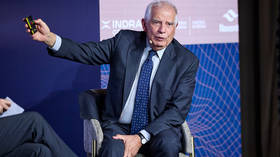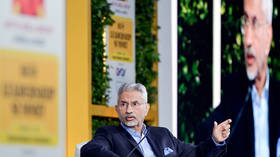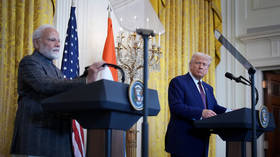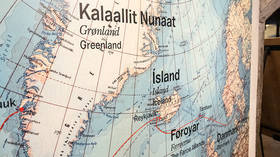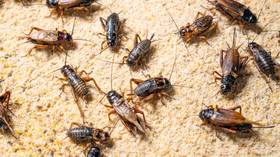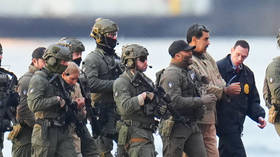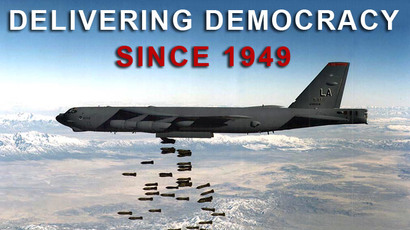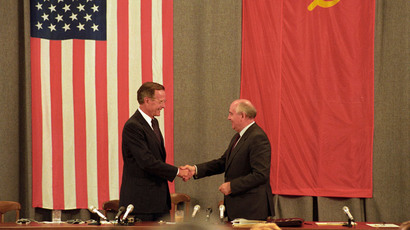NATO’s Russian troop build-up satellite images ‘show 2013 drills’
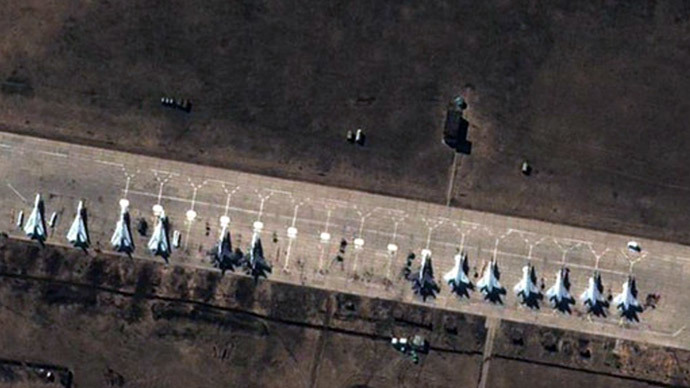
The satellite images released by NATO that allegedly show a current build-up of Russian troops near Ukrainian border were taken in August 2013 amid military drills, a source in the General Staff of the Russian Army has said.
NATO’s top military commander in Europe, General Philip Breedlove, on Wednesday claimed that there is evidence of what he says are 40,000 Russian troops on the border with Ukraine, tweeting a link to satellite images.
The images, some of them colored and some black and white, appear to show multiple Russian tanks, helicopters, fighter jets and a “special forces brigade” with locations and dates added to them. The dates marked range from March 22 to March 27, 2014. Another image not available on the original webpage but used by some Western media has “April 2, 2014” stamped on it.
Upon looking at the photos, a senior official at the General Staff of the Russian Armed Forces has confirmed to RIA Novosti the troops shown are indeed Russian ones and that they were photographed in the south of Russia.
There is one problem, though: the images were taken some eight months before the stated date, the source said.
“These shots, which were distributed by NATO, show Russian Armed Forces units of the Southern Military District, which in the summer of last year were taking part in various drills, including near the Ukrainian border,” the General Staff official told RIA Novosti.

Large military drills held in the south of Russia last year included Combat Commonwealth 2013 – a joint air defense exercise of the Commonwealth of Independent States (CIS). Back then, Ukrainian troops participated in the international drills.
NATO on Thursday continued ramping up allegations of possible “Russian invasion” into Ukraine, with NATO General Secretary Anders Fogh Rasmussen claiming that 40,000 Russian troops are still amassed on the Ukrainian border “not training but ready for combat.”
Rasmussen’s “message to Russia” was then “to stop blaming others for your own actions, to stop massing your troops, to stop escalating this crisis and start engaging in a genuine dialogue.”
Meanwhile, General Breedlove on Wednesday said that US troops may soon be deployed to Europe to “reassure” the NATO allies – a notion, which Russian Foreign Minister Sergey Lavrov called a flagrant breach of the bloc’s international obligations.

The Ukrainian coup-imposed government has also stepped up its rhetoric on Russia’s military presence, even claiming there is “military activity on behalf of the Russian Federation… on the territory of Ukraine” in an invitation to the Netherlands via OSCE network.
Russian Foreign Ministry’s spokesman Aleksandr Lukashevich on Thursday responded to the allegations by stressing that “on the territory of Ukraine, there is no military activity conducted by Russia.”
“This has been confirmed by the group of inspectors from Denmark, Germany, Poland, Austria and Sweden, who were in Ukraine from March 20 to April 2 and visited Kharkov, Donetsk, Mariupol, Nikolaev and Odessa regions,” Lukashevich stated.
Suggesting the territory mentioned in the diplomatic note might have been that of the Crimean Republic, the spokesman said the related activity there has to do with transferring of the ships and military hardware to Ukraine, as well as with the “inventorying of the military installations.” As soon as this process is finished, the international inspectors are welcome to the territory of the peninsula – provided they send a request to Moscow, not to Kiev, he stressed.



